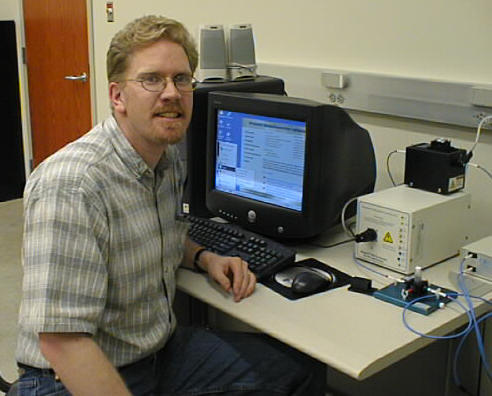CURRENT RESEARCH INTERESTS
BioInorganic Chemistry at UMKC
My interests
lie in a broadly defined field termed “BioInorganic Chemistry.”
This area of inorganic chemistry covers a broad spectrum of topics,
techniques and disciplines. Simply put, bioinorganic chemistry is the chemistry of metals
interacting with biological or environmental materials and molecules.
This research has a basic component and an applied component.
The first concerns the fundamental biological functions of metals such
as looking at catalysis and electron transport in metal containing enzymes,
the structural and regulatory roles of metals, metal toxicity and the
transport and storage of metals in the biological systems and the environment.
On the applied side, bioinorganic chemistry concerns itself with the
development of medical imaging agents, radiopharmaceuticals, biochemical
probes and sensors, metal toxicity and environmental remediation.
The specific
research interests in my laboratory covers aqueous inorganic chemistry of
various transition metals (and other metals) with biological materials, mainly
peptides. I’m interested in
using the variation available in natural and synthetic amino acids ( in their
side chains) to create new coordination chemistry motifs for various metals
with peptide fragments. Projects
currently underway include, iron (Fe3+)
coordination to small peptides which include deprotonated amide and thiolate
donors, gold (Au) complexes with
similar peptides, and the synthesis and characterization of new chromium (Cr3+)
amino acid complexes. Much of
this chemistry is looking at the fundamental coordination chemistry of these
complexes and the influence of the peptide ligands on their chemical
reactivity.
On a more
applied side, I am interested in a new class of uranium (U)
binding ligands which include high stability and are targeted toward in
developing effective competition agents and chemical sensors for uranium and
the actinides, especially the actinyl cations (e.g. UO22+)
with their characteristically non-spherical shape.
Uranium exhibits a chemical (not radiological) health hazard as a
‘heavy metal’ and is also of interest from a purely chemical point of
study. We are also investigating the molecular species of uranyl in
the body and its interactions with biological ligands.
While having
current interests particularly in Au, Fe, U, Th, Ni, Cu, Zn, and Pb, I would
welcome any other metal in the periodic table into my laboratory.
The techniques used widely in my lab include:
organic synthesis of ligands; inorganic synthesis, characterization of
ligands and complexes by NMR, mass spectrometry, and other standard methods;
analytical chemistry; computational modeling.
